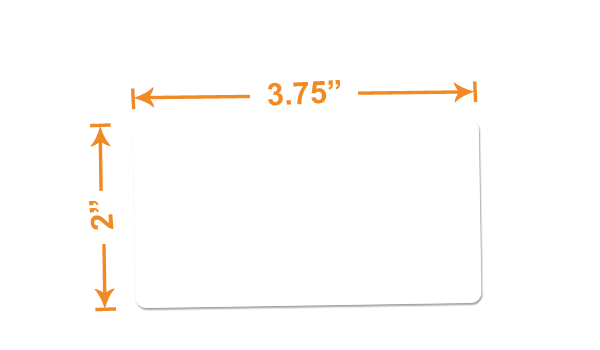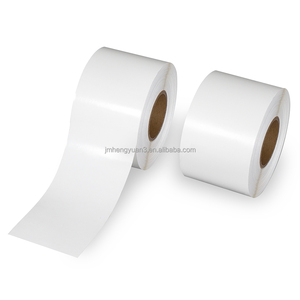Comprehending How Blank Labels Work to Enhance Your Labeling Experience
Comprehending the mechanics of blank labels is necessary for maximizing your labeling methods throughout various contexts. These functional devices use considerable benefits, such as modification and adaptability, making them a suitable selection for both professional settings and personal use. From inventory administration to home company, the implications of their critical application can result in improved performance. To completely comprehend just how these labels can transform your processes, one need to consider the various types available and the myriad methods they can be personalized to suit certain demands.

Benefits of Utilizing Blank Labels
Blank labels offer a functional service for numerous labeling demands, making them indispensable in both personal and expert setups. Their versatility permits users to develop customized labels customized to details demands, boosting organizational effectiveness. Whether utilized in office, retail settings, or industrial applications, blank labels assist in the recognition and categorization of items, records, and personal products.
One considerable advantage of blank labels is their cost-effectiveness. By permitting users to print only the labels they need, waste is lessened, and supply monitoring becomes much more workable. Furthermore, blank labels are suitable with numerous printing approaches, consisting of inkjet and printer, making them accessible for different users.

Additionally, the use of blank labels simplifies the procedure of updating info, as customers can easily print brand-new labels to replace out-of-date ones, making certain that all products and papers are properly labeled. Generally, blank labels provide a useful and reliable labeling solution for diverse applications.
Sorts Of Blank Labels Available
What options are offered when it involves blank labels? Blank labels come in a selection of kinds, each fit for various applications and choices. The most usual types include paper labels, which are flexible and economical, making them suitable for day-to-day usage. They are offered in various coatings, such as matte and glossy, permitting visual versatility.
One more prominent alternative is artificial labels, often made from materials like polyester or vinyl. These labels are known for their sturdiness and resistance to water, chemicals, and tearing, making them ideal for harsh atmospheres. They are typically utilized in industrial settings or for labeling products that may be exposed to moisture.
In addition, there are thermal transfer labels, which call for a printer that utilizes warm to transfer ink onto the label surface. These labels are favored for their high-quality print and longevity.
Last but not least, specialized labels satisfy certain requirements, such as removable labels for short-term use or high-temperature labels for severe problems. Comprehending these choices allows customers to pick one of the most suitable blank label for their one-of-a-kind labeling needs.
Personalization Options for Labels
A large range of customization alternatives is offered for labels, allowing customers to customize them to particular needs and branding needs. Individuals can select from numerous sizes, forms, and products to guarantee that the labels effectively fit their designated purpose. Usual materials consist of paper, polyester, and plastic, each offering various levels of longevity and visual appeal.
Shade options play a critical function in customization, making it possible for brands to keep consistency with their company identity. Individuals can pick from a range of shades or even select custom-made printing to match specific branding aspects. In addition, labels can be printed with one-of-a-kind designs, logo designs, and message, improving brand name recognition and visual influence.
Another crucial aspect is the option of these details adhesive. Tags can be designed with long-term, detachable, or repositionable adhesives, depending on the application demands. This Going Here adaptability permits efficient labeling remedies across various atmospheres, from retail to commercial settings.

Tips for Effective Labeling
Reliable labeling goes beyond customization; it likewise includes strategic factors to consider that improve functionality and communication. To achieve reliable labeling, begin by clearly defining the objective of each label.
Next, prioritize presence by choosing proper colors and typefaces. High contrast in between text and history enhances readability, while larger typefaces help with fast identification. In addition, ensure that labels are placed in a consistent and rational fashion, making it simpler for customers to locate and translate details.
Think about the durability of labels. Select products matched for the particular atmosphere where the labels will certainly be used, whether it be inside your home or outdoors. Water resistant or tear-resistant choices might be essential depending on the context.
Finally, consistently review and update your labels to show any kind of adjustments in information or usage. This positive technique not only preserves quality yet additionally avoids confusion in time. By complying with these ideas, you can maximize the effectiveness of your labeling efforts, ensuring they serve their intended function effectively.
Applications of Blank Labels
Blank labels use many applications throughout different markets, making them a vital device for organization and communication. These versatile labels are typically used in storage facilities for inventory management, allowing organizations to conveniently recognize and track items. By applying blank labels to storage containers, racks, or pallets, business can improve their operations and reduce the likelihood of mistakes.
In the health care industry, blank labels play a vital role in labeling drugs and clinical supplies, ensuring correct identification and usage. Personalized labels can consist of vital information such as dose, expiration dates, and person details, enhancing safety and security and compliance.
In retail, blank labels assist in rates products, giving promos, or labeling rack places, which ultimately improves the customer experience. They enable fast updates to pricing or item information without the demand for pre-printed labels.
Additionally, blank labels are beneficial for individual use, such as arranging home offices, crafting, or classifying food containers. Their adaptability permits individuals to develop tailored options that meet details requirements. On the whole, the applications of blank labels are comprehensive, underscoring their value in fostering effectiveness and clarity in different setups.
Conclusion
To conclude, blank labels present a flexible and reliable service for numerous labeling requirements. Their flexibility in size, shape, and product permits for tailored applications across various environments. By leveraging personalization alternatives and effective labeling techniques, companies can boost clarity and communication (Blank Labels). Inevitably, the assimilation of these details blank labels into operational processes adds to boosted efficiency, making them a vital source for both individual and specialist usage.